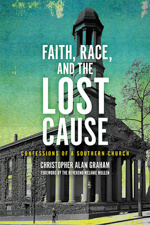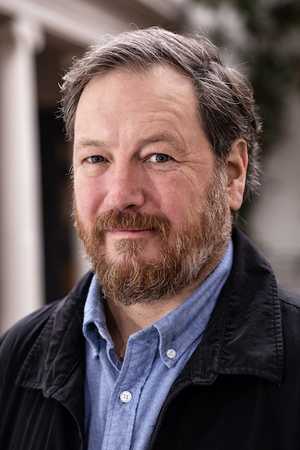Today, we are happy to bring you our conversation with Christopher Alan Graham, author of FAITH, RACE, AND THE LOST CAUSE: Confessions of a Southern Church.
What inspired you to write this book?
St. Paul’s did. In 2015 this congregation began a process of historical self-study in the wake of the 2015 murders at Emanuel AME in Charleston, S.C.
Long known as the “Church of the Confederacy,” St. Paul’s hosted scores of Confederate leaders in its pews. The church sanctified its wartime experience and associations as part of the larger Lost Cause movement by installing stained glass windows to the memory of Jefferson Davis and Robert E. Lee and positioning itself as a destination for Confederate nostalgia in the Twentieth Century.
When I moved to Richmond in 2016, I joined the church and happily jumped into the congregational research process. That research resulted in a report to the congregation in early 2020, and this book—a racial history of St. Paul’s from its founding in 1845 until the present moment—followed.
Faith, Race, and the Lost Cause chronicles the ways that St. Paul’s people understood their religious obligation to the racial order over time, and how the historical imagination empowered by the Confederate experience shaped the racial landscape of Richmond in the Twentieth Century. Ultimately, this is not an academic inquiry, but the response to a group of people who desired to know how, and why, history had touched them in this way.
What did you learn and what are you hoping readers will learn from your book?
Doing this reinforced a point that I hope readers will take away.
In 2015, the people of St. Paul’s were taken aback that anyone would think of them as beholden to a revanchist history and social outlook associated with the Lost Cause, despite the church’s historical reputation. They had changed, and the Confederate identity of the congregation had slipped away over a generation ago. Investigating how and why the church changed over a broad span of time gives us a way to think about what is significantly different, and what of a toxic historical memory, adapted, and may remain.
This is about St. Paul’s, but it is also about how change over time works for any institution or group of people.
What surprised you the most in the process of writing your book?
The surprises are what we did not find. There are no fire-breathing and violent racists in this story. Instead, these subjects of this book, from 1844 until the late 20th Century, were proud paternalists who built a racial hierarchy based on what they regarded as the best interests of a biracial society, and Black people in particular.
Of course, historians are familiar with paternalism, but I have found that in foregrounding this fact in public discussions has had greater utilitarian value in untangling a painful racial history where violence and terror are usually (and rightly) prioritized as the tools of white supremacy.
It’s also an extremely sobering fact to consider by anyone who advocates for something out of love and compassion today.
What’s your favorite anecdote from your book?
This is difficult to identify because fundamentally, this is about how our spiritual ancestors did harm while thinking they’re doing good. Makes it hard to revel too much in their exploits. So, when the rectors preached anti-Klan sermons in the 1920s, that’s neat, but they’re only advocating for a less violent segregation. (Same for the guy who punched a Klansman—twice—on the church’s portico.)
So I suppose my favorite moments are the small ones, where one generation after another learned to see the world—and their place in its racial configurations and relation to Confederate nostalgia—in different ways. You see that in the actions and reflections of men and women like Russell Bowie, Anne Freeman, Jack Spong, and Buford Scott. The slow shifts ultimately add up to big ones.
What’s next?
My day job has me shepherding a series of exhibits on the causes, courses, and consequences of the American Civil War, so I don’t have a new book project in sight. That said, one of the more well-known stories connected to St. Paul’s is that of Robert E. Lee’s alleged act of kneeling next to a Black man after the war as a sign of racial reconciliation. That story has a fascinating journey through America’s turbulent Twentieth Century, and examining the surprising ways that it has shown up and been used over time (by people as wide ranging as Carter Woodson and Billy Graham) is something that I’d like to get into print in some fashion.





